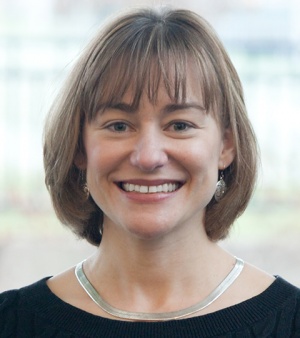CAZypedia needs your help! We have many unassigned GH, PL, CE, AA, GT, and CBM pages in need of Authors and Responsible Curators.
Scientists at all career stages, including students, are welcome to contribute to CAZypedia. Read more here, and in the 10th anniversary article in Glycobiology.
New to the CAZy classification? Read this first.
*
Consider attending the 15th Carbohydrate Bioengineering Meeting in Ghent, 5-8 May 2024.
User:Nicole Koropatkin
Nicole Koropatkin received her PhD in Biochemistry from the University of Wisconsin in 2004. Trained in structural enzymology in the lab of Hazel Holden, her graduate work focused on the enymes involved in O-antigen deoxysugar biosynthesis in Salmonella typhi. After finishing her training, she moved to the lab of Thomas Smith at the Donald Danforth Plant Science Center in St. Louis. She received an NRSA to determine the structural basis for nitrate and bicarbonate discrimination within the ABC transport systems of Synechocystis PCC 6803. After completing this study, she teamed up with Eric Martens from the Jeffrey Gordon lab at Washington University in St. Louis in order to investigate the structures of the novel proteins encoded within Bacteroidetes polysaccharide utilization loci. In 2009 she moved to the University of Michigan Medical School. She is currently an Assistant Professor in the Microbiology and Immunology department. The Koropatkin lab studies the structural biology of glycan capture by a variety of human gut bacteria.
Selected Citations
Koropatkin N, Martens EC, Gordon JI, Smith TJ: Structure of a SusD homologue, BT1043, involved in mucin O-glycan utilization in a prominent human gut symbiont. Biochemistry 48(7): 1532-1542, 2009. [Pubmed ID: 18611383][1]
Martens EC, Koropatkin NM, Smith TJ, Gordon JI: Complex glycan catabolism by the human gut microbiota: the Bacteroidetes Sus-like paradigm. J. Biol. Chem. 284(37): 24673-24677, 2009.
Koropatkin NM, Smith TJ: SusG: a unique cell-membrane-associated alpha-amylase from a prominent human gut symbiont targets complex starch molecules. Structure 18(2): 200-215, 2010.
Cameron EA, Kwiatkowski KJ, Lee BH, Hamaker BR, Koropatkin NM, Martens EC: Multifunctional nutrient-binding proteins adapt human symbiotic bacteria for glycan competition in the gut by separately promoting enhanced sensing and catalysis. mBio 5(5): e01441-14, 2014.
Karunatilaka KS, Cameron EA, Martens EC, Koropatkin NM, Biteen JS: Superresolution imaging captures carbohydrate utilization dynamics in human gut symbionts. mBio 5(6): e02172, 2014.
Cockburn DW, Orlovsky NI, Foley MH, Kwiatkowski KJ, Bahr CM, Maynard M, Demeler B, Koropatkin NM: Molecular details of a starch utilization pathway in the human gut symbiont Eubacterium rectale. Mol. Microbiol. 95(2): 209-30, 2015.
Foley MH, Cockburn DW, Koropatkin NM: The Sus operon: a model system for starch uptake by the human gut Bacteroidetes. Cell Mol Life Sci: 2016.
Tauzin AS, Kwiatkowski KJ, Orlovsky NI, Smith CJ, Creagh AL, Haynes CA, Wawrzak Z, Brumer H, Koropatkin NM: Molecular dissection of xyloglucan recognition in a prominent human gut symbiont. mBio 7(2): e02134-15, 2016.
Larsbrink J, Zhu Y, Kharade SS, Kwiatkowski KJ, Eijsink VG, Koropatkin NM, McBride MJ, Pope PB. A polysaccharide utilization locus from Flavobacterium johnsoniae enables conversion of recalcitrant chitin. Biotechnol Biofuels. 9:260, 2016.
Cockburn DW, Koropatkin NM. Polysaccharide Degradation by the Intestinal Microbiota and Its Influence on Human Health and Disease. J Mol Biol. Aug 14;428(16):3230-5, 2016
Wefers D, Cavalcante JJV, Schendel RR, Deveryshetty J, Wang K, Wawrzak Z, Mackie R, Koropatkin N, Cann I. Biochemical assignment of two cryptic proteins in Bacteroides intestinalis as bifunctional esterases and their synergistic activities with cognate xylan degrading enzymes. J Mol Biol. 429 (16):2509-2527, 2017.
